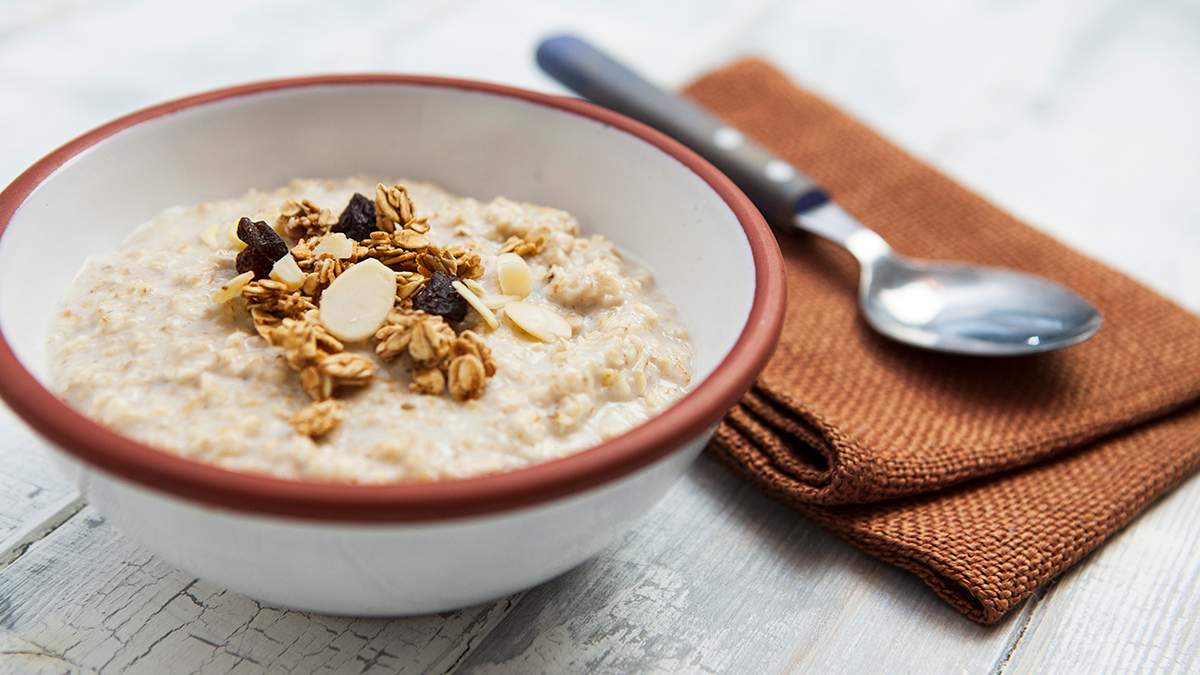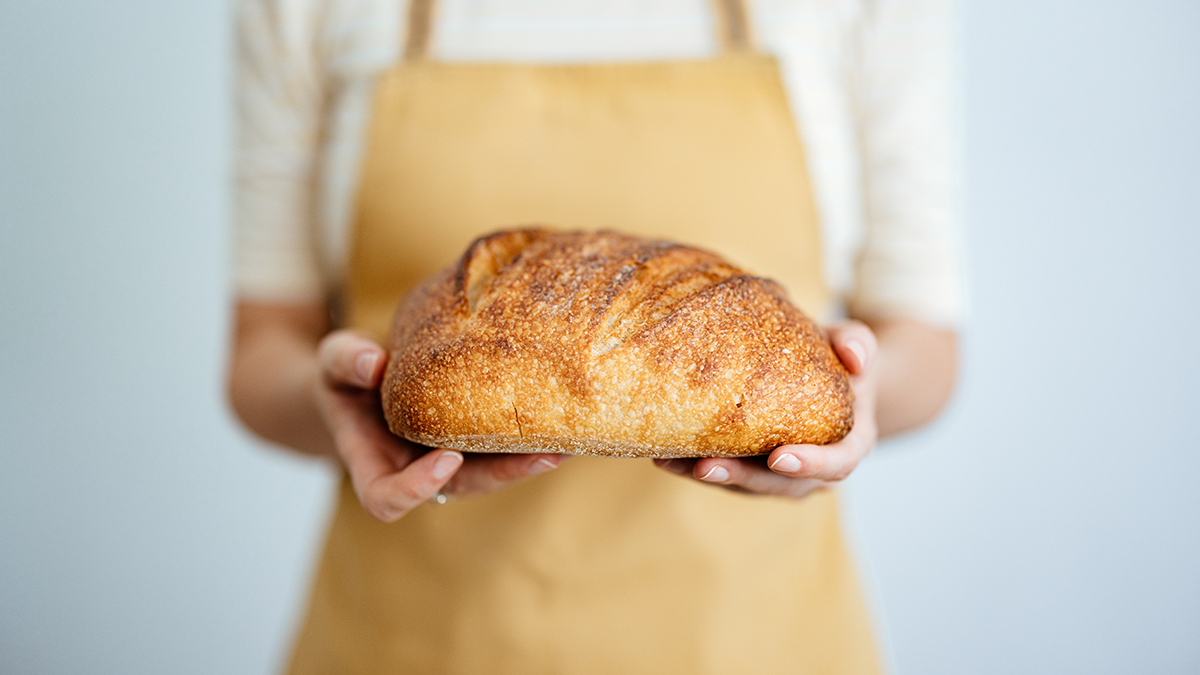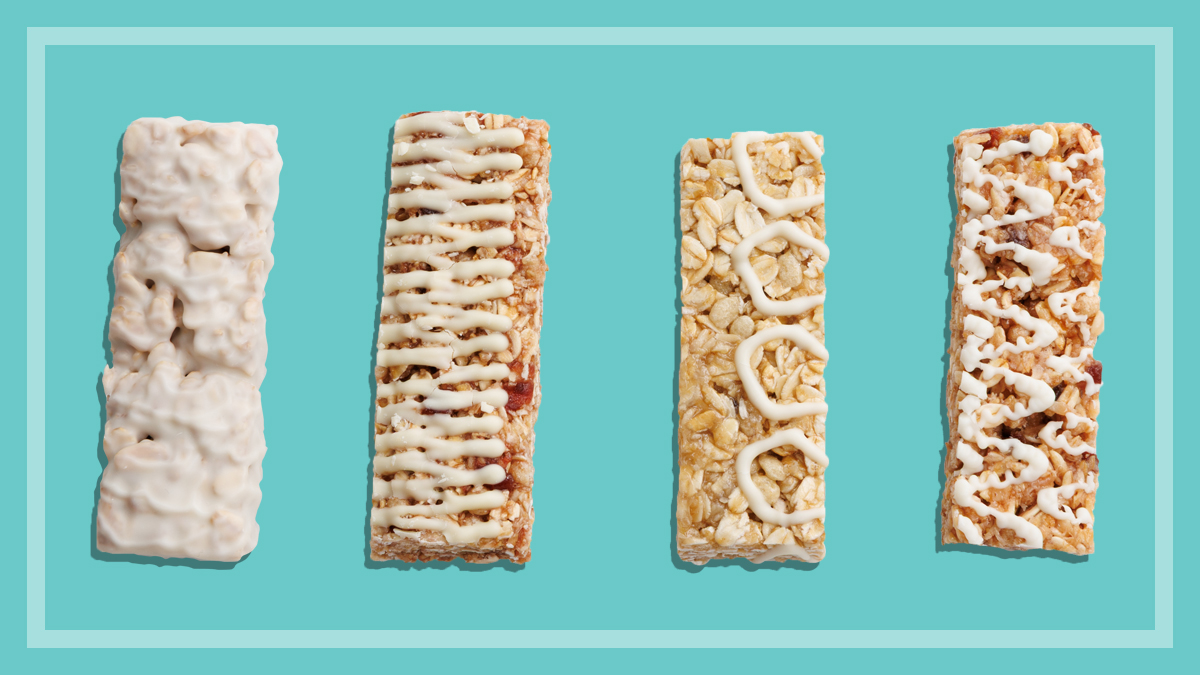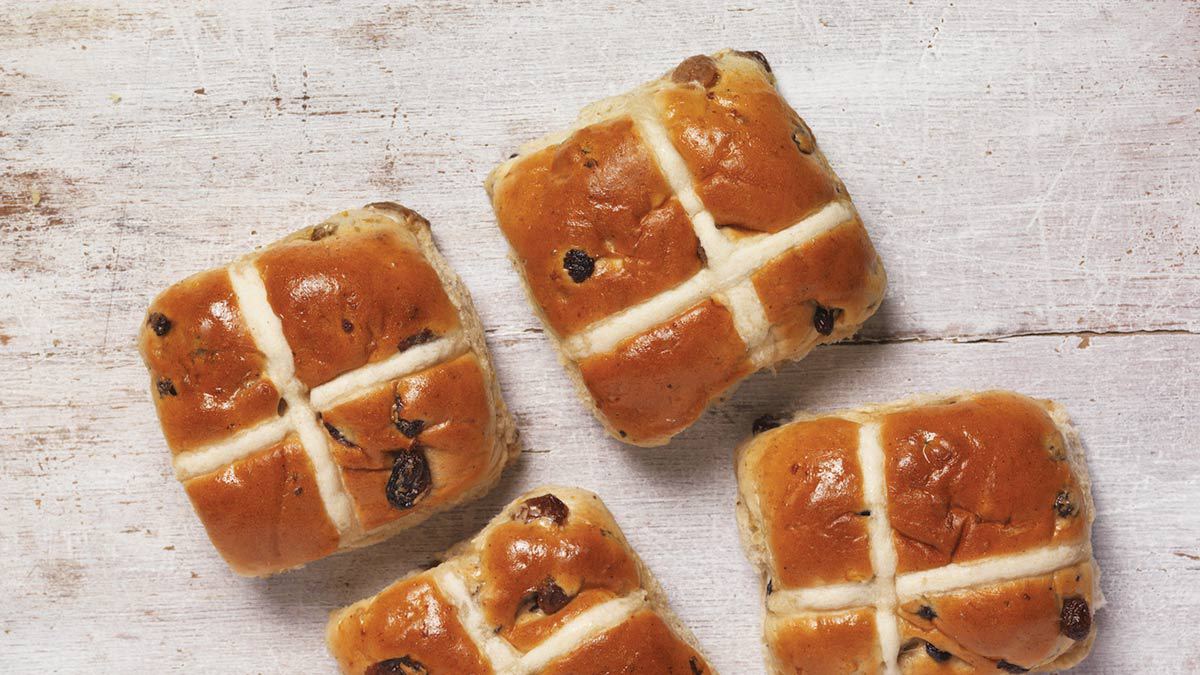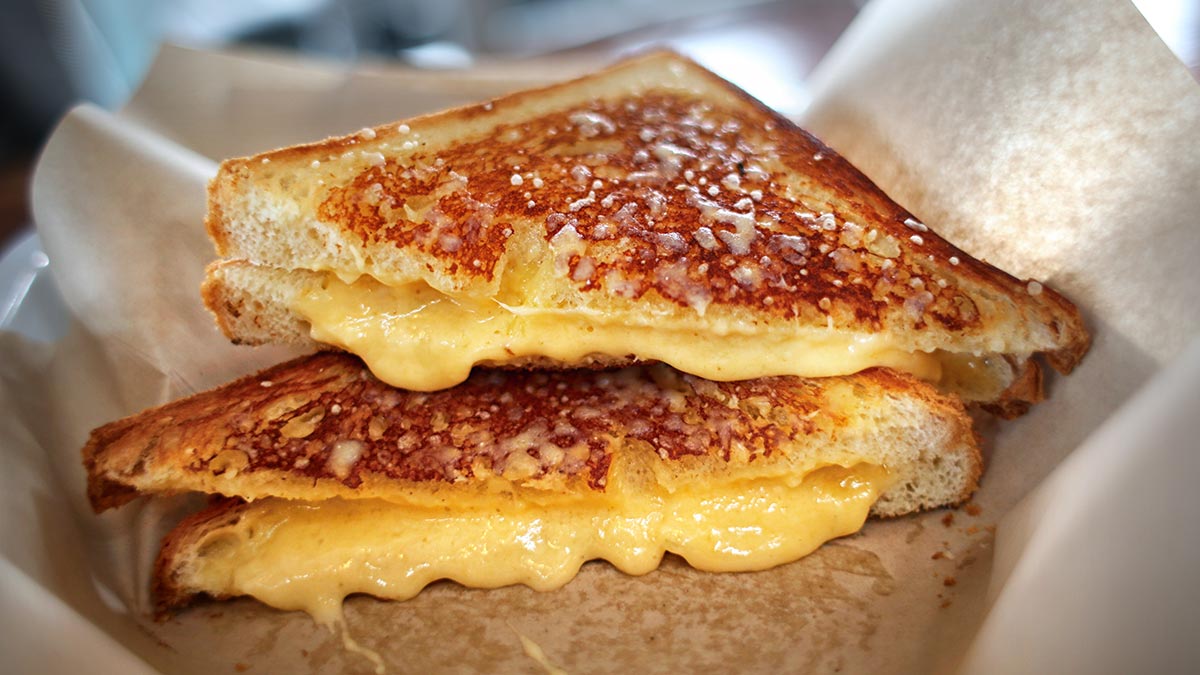Get our independent lab tests, expert reviews and honest advice.
Best and worst kids’ breakfast cereals
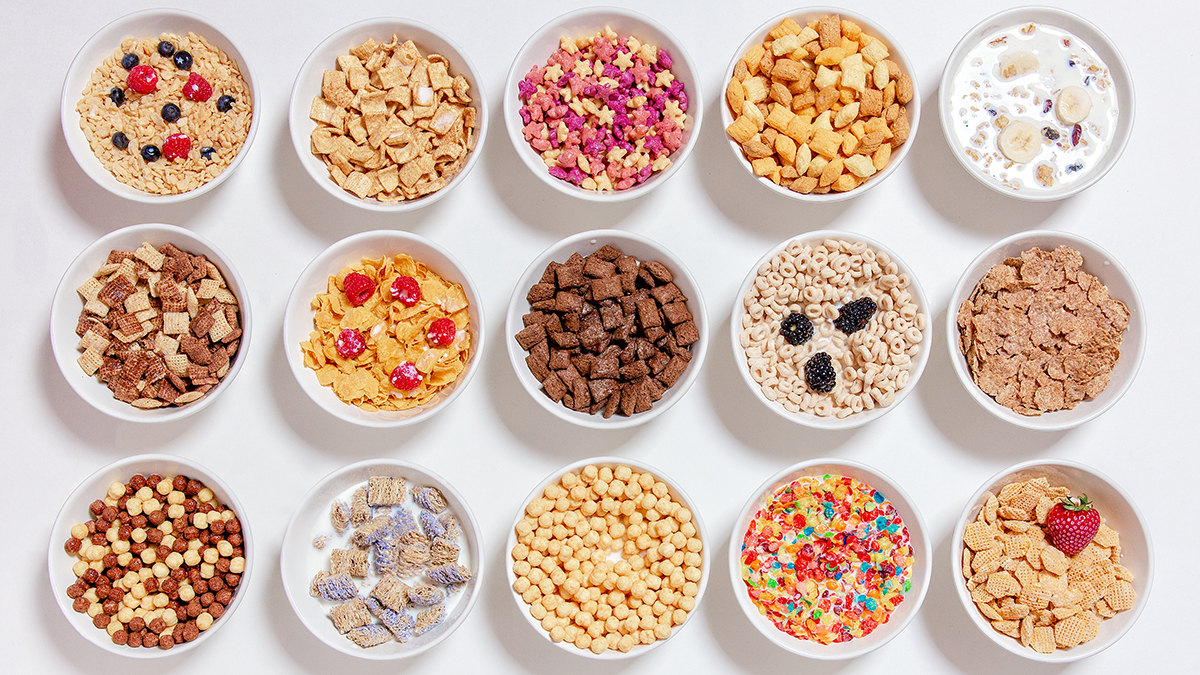
The early morning rush to get kids fed, dressed and out the door for school can be a hectic start to the day. Breakfast cereal is a quick and easy solution to the ‘getting fed’ bit – simply pour it in a bowl, top it up with some milk and ta-da, it’s ready to eat.
On this page:
- The healthiest kids' cereals
- Cereals to avoid
- Added vitamins and minerals
- The power of marketing
- Cereals that are lower in added sugar
- How we got our results
But there are a lot of cereal products marketed to kids, ranging from those that claim all sorts of health benefits, through to colourful, sugary shapes (that still attempt some health claims). How do you balance what’s healthy enough with what kids will actually eat?
To help you make a more informed decision, we’ve compared the nutrition information of 49 different children’s breakfast cereals. We’ve categorised “kids’ cereals” as the products that are marketed to and generally enjoyed by children, including extruded cereals (those that are processed into fun shapes, porridges, biscuits and mixes).
The healthiest kids’ cereals
We define ‘healthiest’ as cereals with a Health Star Rating (HSR) of 4.5 or more, a wholegrain content of more than 50%, and added sugar of less than 15g per 100g (roughly less than a teaspoon per serve, as listed by the George Institute For Global Health’s FoodSwitch app).
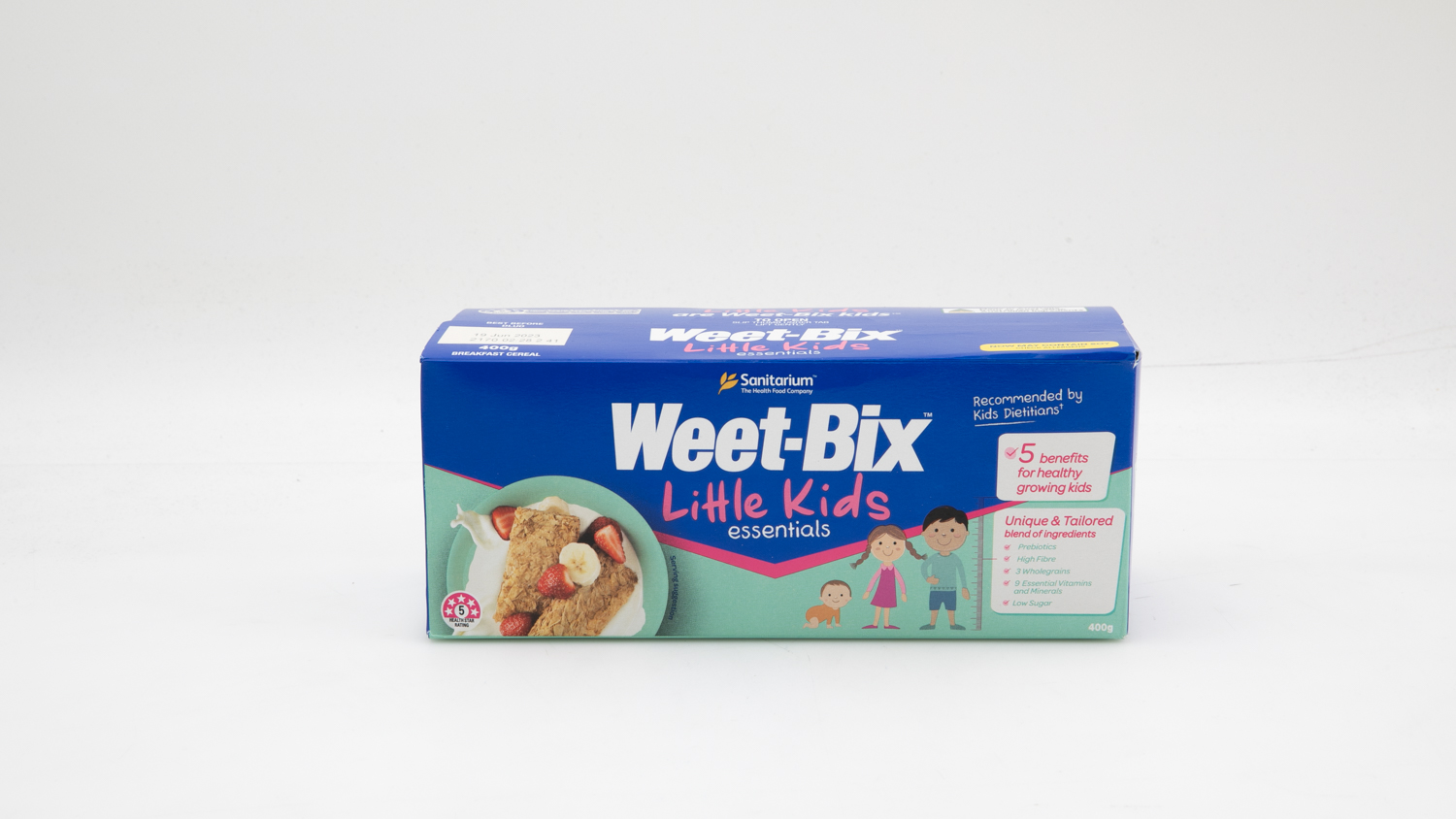
Sanitarium Weet-Bix Little Kids Essentials Breakfast Cereal
- Health Star Rating: 5
- Wholegrain content: 97%
- Estimated added sugar: 2.9%
- Label marketing to children: Yes
- Price: $1.13 per 100g
- Claims on pack: “Recommended by kids’ dietitians, five benefits for healthy growing kids, prebiotics, high fibre, nine essential vitamins and minerals, full of wholegrain goodness, high in iron, low sugar, no added salt, no artificial colours, flavours or preservatives”.
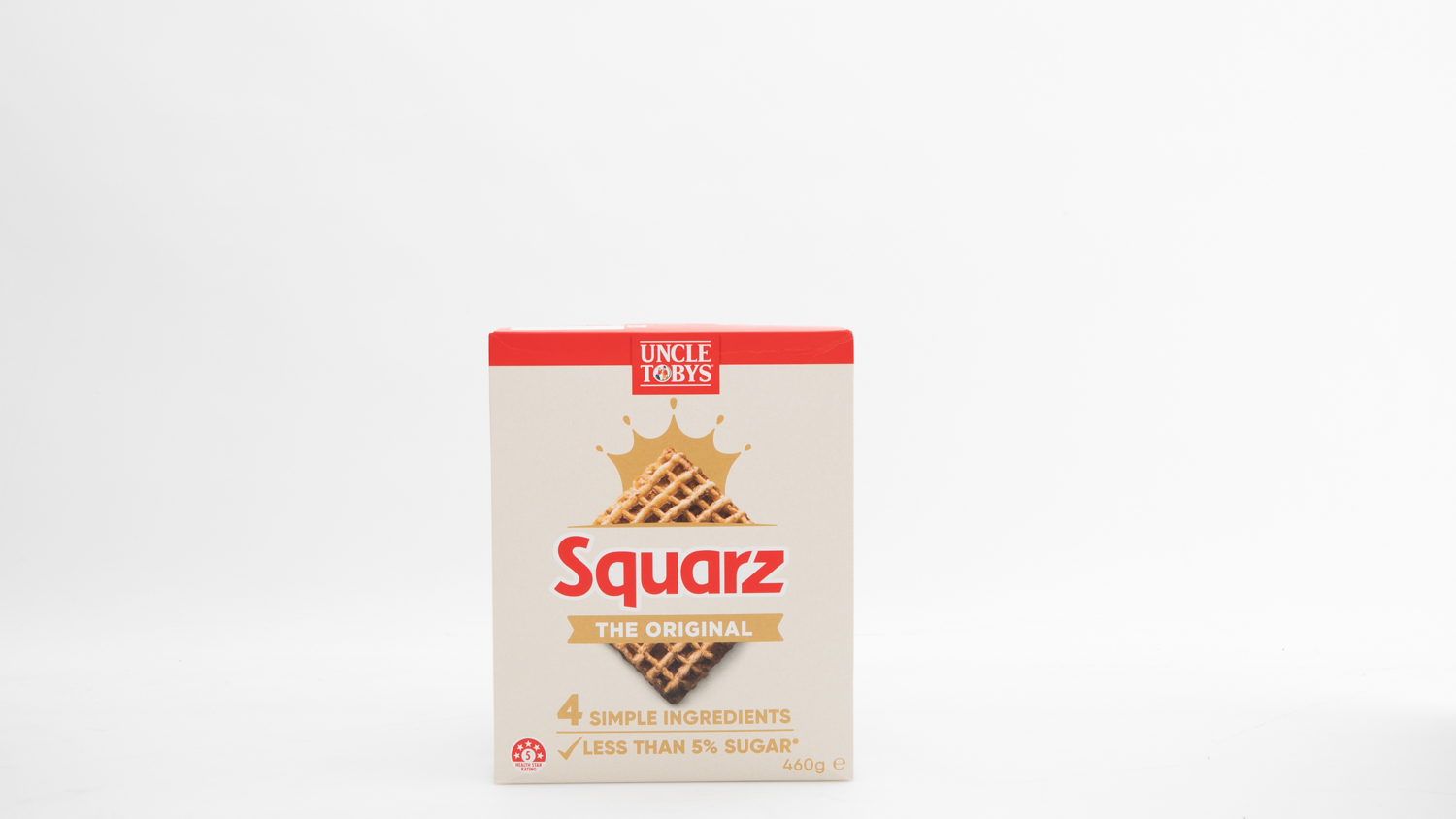
Uncle Toby’s Squarz The Original
- Health Star Rating: 5
- Wholegrain content: 95%
- Estimated added sugar: 4.2%
- Label marketing to children: No
- Price: $1.30 per 100g
- Claims on pack: “Four simple ingredients, less than 5% sugar, high in fibre with the awesomeness of whole grains, absolutely no refined sugar”.
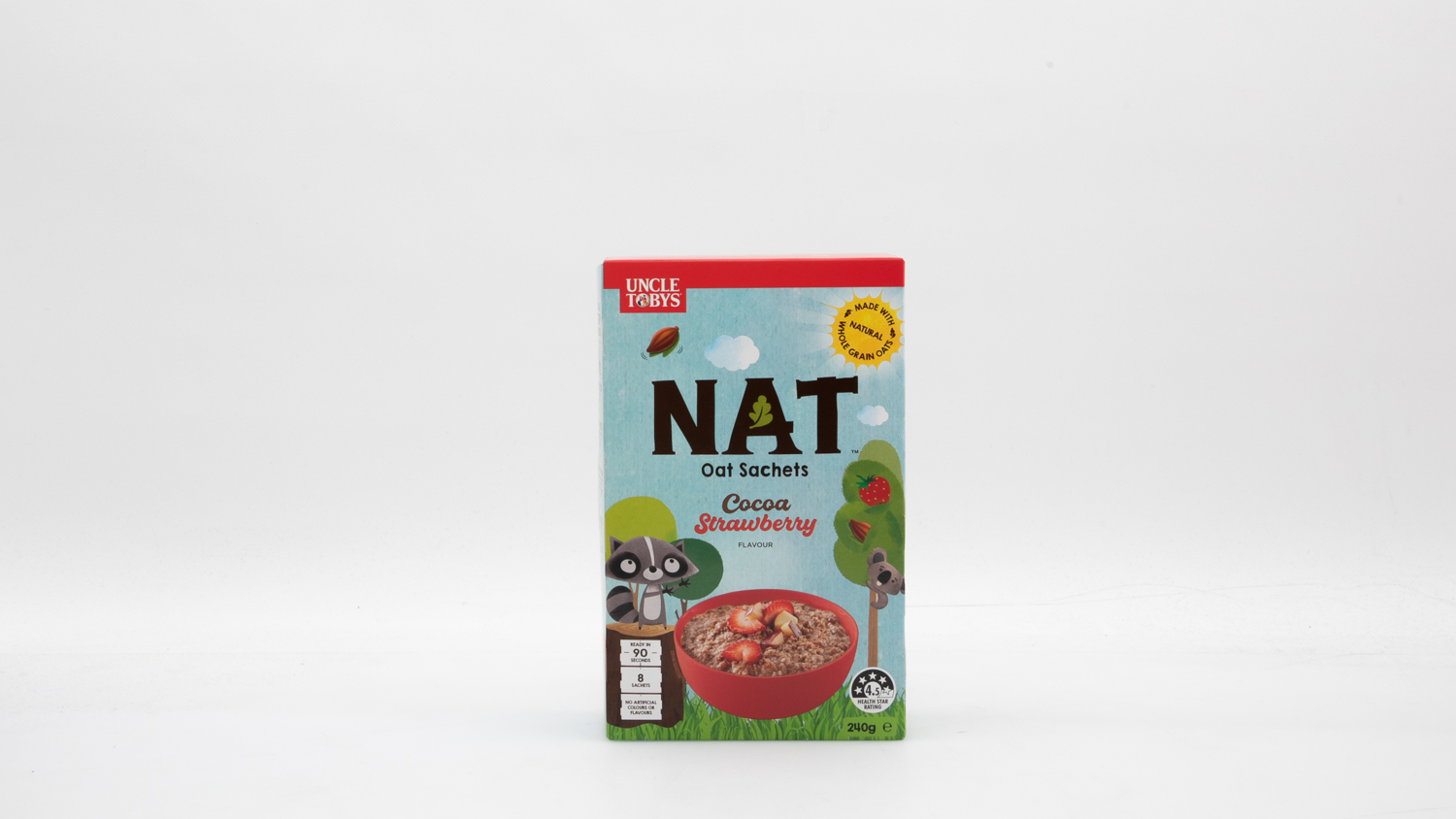
Uncle Toby’s Nat Oat Sachets Cocoa Strawberry Porridge
- Health Star Rating: 4.5
- Wholegrain content: 81%
- Estimated added sugar: 13.2%
- Label marketing to children: Yes
- Price: $1.88 per 100g
- Claims on pack: “Made with natural wholegrain oats, no artificial colours or flavours”.
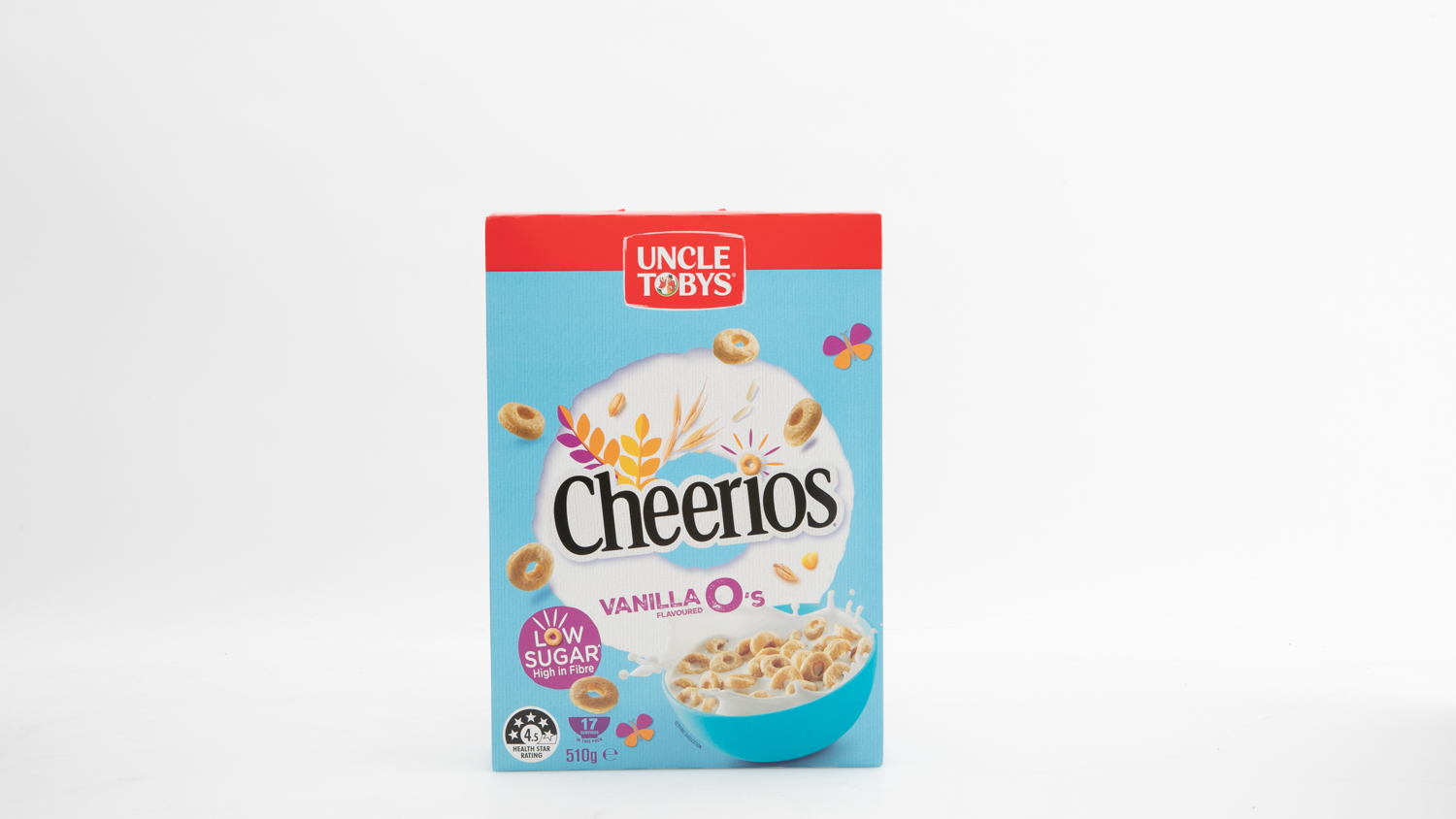
Uncle Toby’s Cheerios Vanilla O’s
- Health Star Rating: 4.5
- Wholegrain content: 67%
- Estimated added sugar: 4.1%
- Label marketing to children: No
- Price: $1.18 per 100g
- Claims on pack: “Low sugar, high fibre, four crunchy whole grains, no artificial colours or flavours”.
Cereals to avoid
These four cereals contain more than an estimated 35% added sugar, have a Health Star Rating of two or less, and have some form of marketing incentive to get kids pestering parents for them. If you want to provide a healthier breakfast, then steer clear of serving these products regularly.
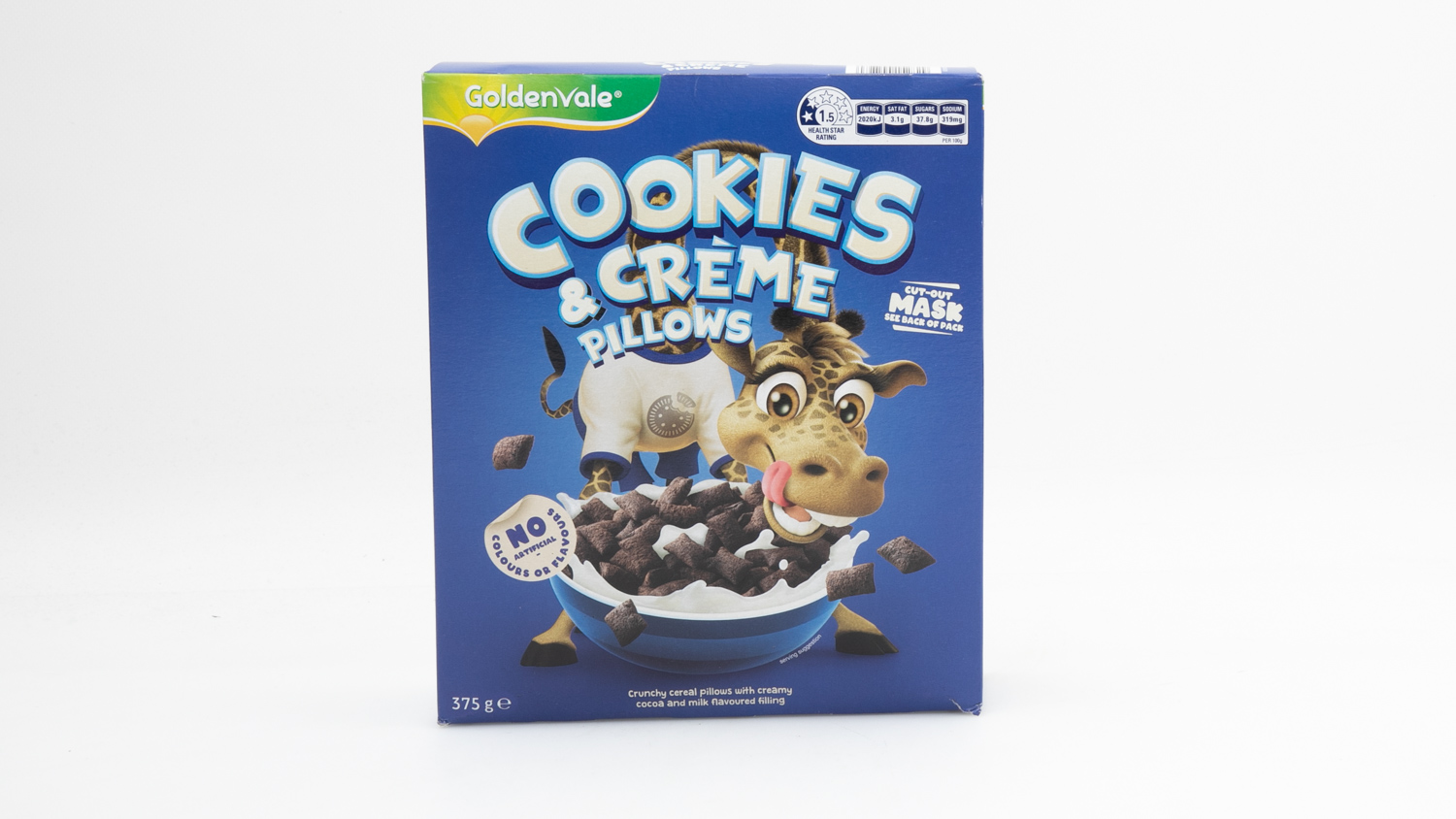
Goldenvale Cookies & Crème Pillows
- Health Star Rating: 1.5
- Wholegrain content: Not specified
- Estimated added sugar: 38%
- Price: 53c per 100g
- Label marketing to children: Yes
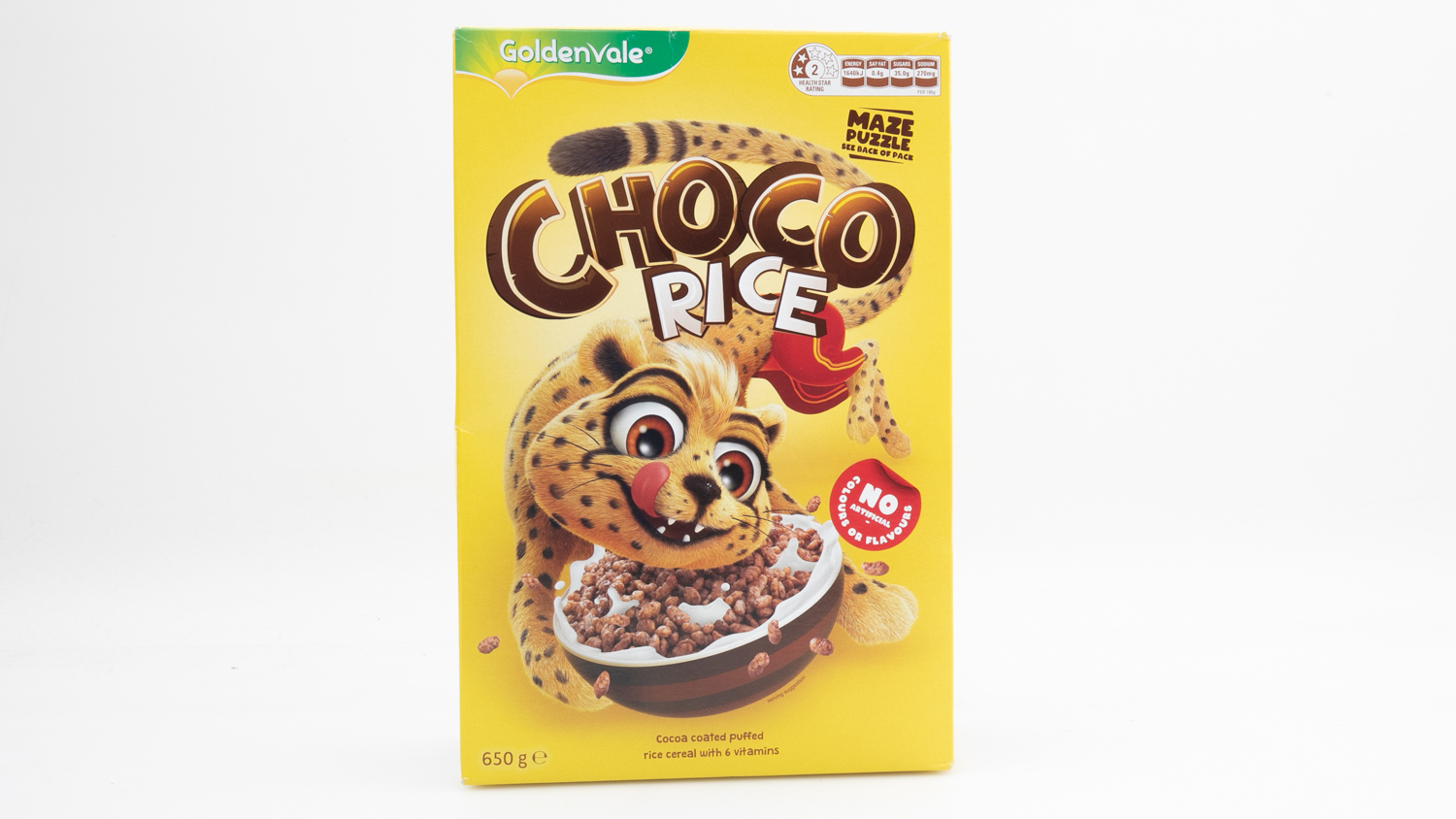
Goldenvale Choco Rice
- Health Star Rating: 2
- Wholegrain content: Not specified
- Estimated added sugar: 35%
- Price: 61c per 100g
- Label marketing to children: Yes
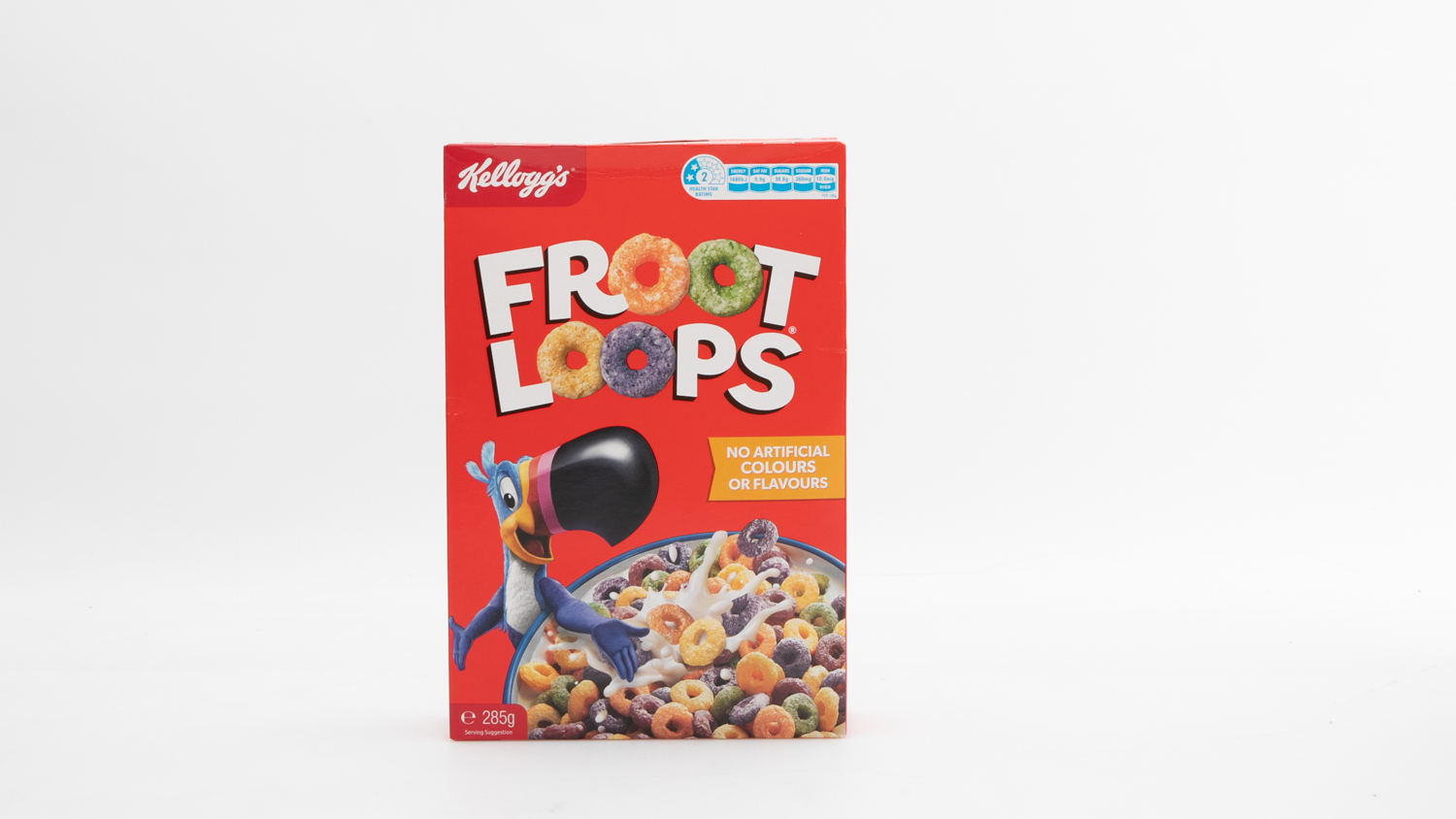
Kellogg’s Froot Loops
- Health Star Rating: 2
- Wholegrain content: Not specified
- Estimated added sugar: 39%
- Price: $2.46 per 100g
- Label marketing to children: Yes
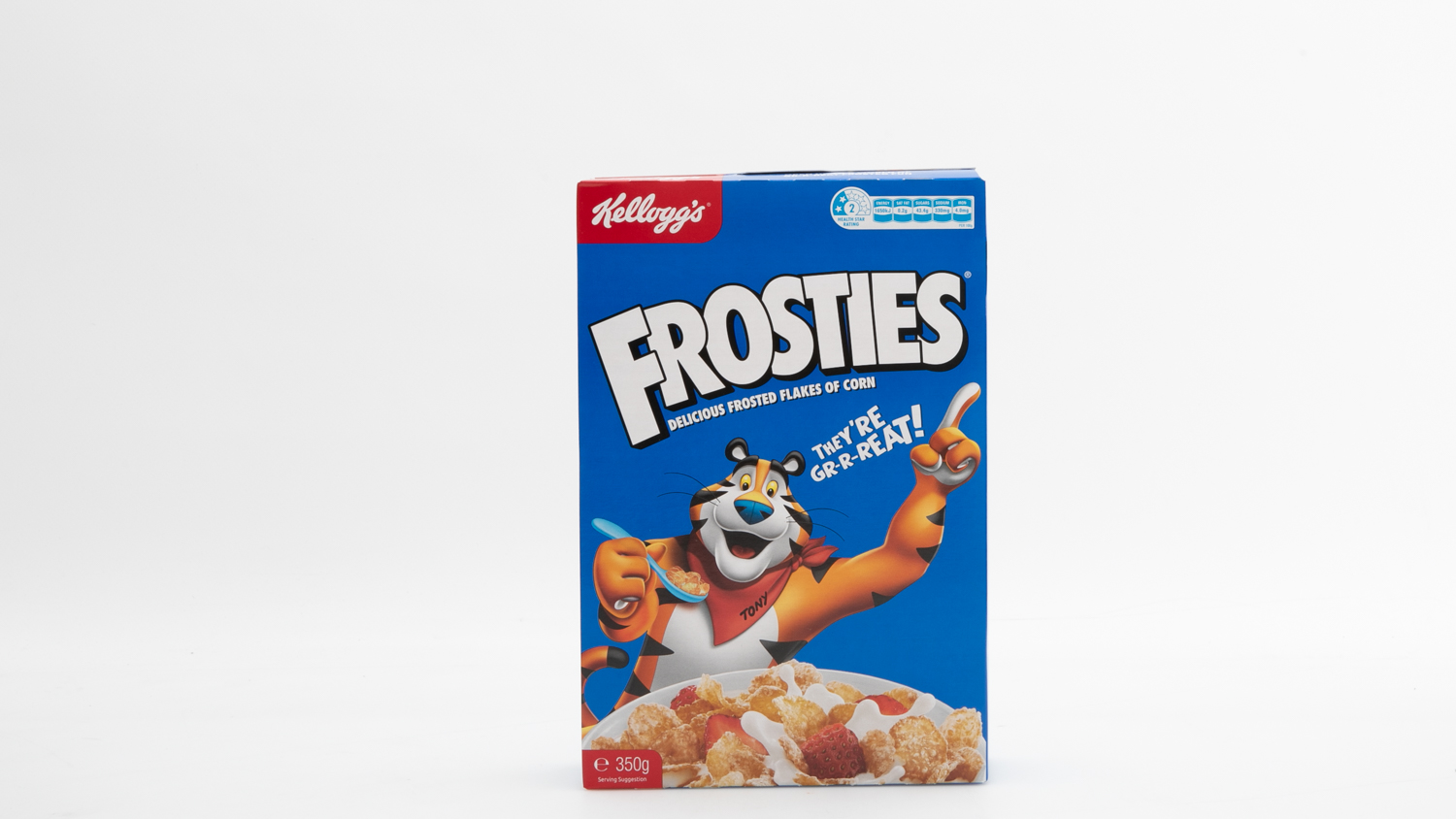
Kellogg’s Frosties
- Health Star Rating: 2
- Wholegrain content: Not specified
- Estimated added sugar: 41%
- Price: $1.86 per 100g
- Label marketing to children: Yes
Added vitamins and minerals
Many breakfast cereals contain added vitamins and minerals, which can make a useful contribution to your child’s diet. However, it’s more important when choosing a cereal to base your shortlist on the Health Star Rating (or alternatively high fibre and lower salt and added sugars) before considering added vitamins and minerals.
The bottom line is that most kids’ cereals are better than no breakfast at all, and the vitamins and minerals as well as the protein and good-for-your-bones calcium from the milk are a bonus.
Sugar and salt do play a vital role in the tastiness of a product, but many cereals targeted specifically at kids have more in common with treat foods than a nutritious breakfast.
The power of marketing
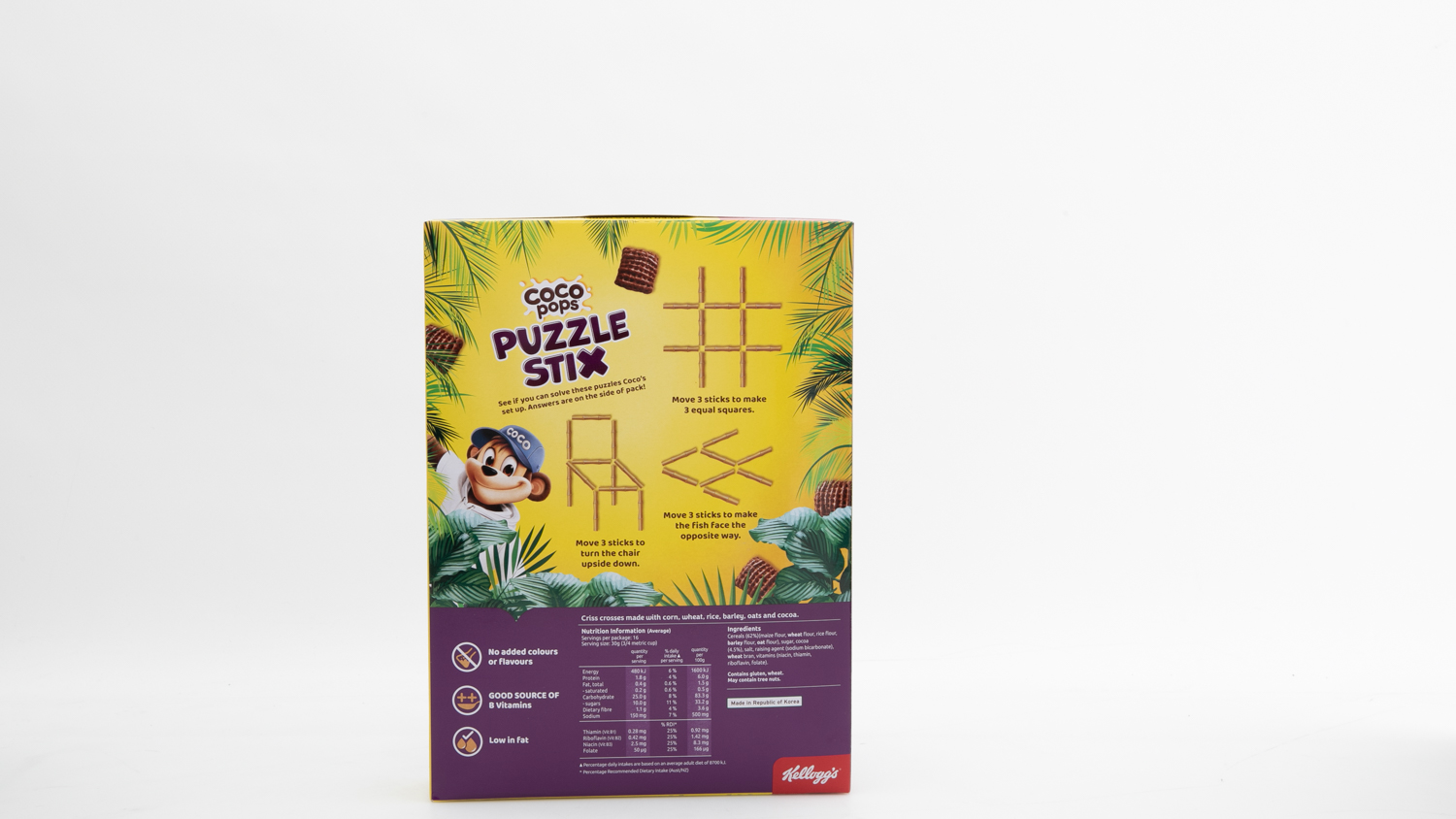
Pester power or repeatedly nagging parents to buy certain foods is a form of influence used by food industry marketers to increase the sales of their products. Children have been shown to demand that their parents buy food products with packaging that contains cartoons, therefore influencing their purchasing choices.
Of the cereals we looked at, we found that products with cartoon characters or games on their packs had on average:
- one less health star
- 7g more added sugar
- 19g less wholegrain
- 1.6g less fibre
- 65mg more sodium per 100g.
What’s compelling is that those that didn’t display marketing to children were generally on the healthier side, with 8 in 10 of the products earning a Health Star Rating of 4 or more.
Of the cereals that did market to children, just 4 in 10 had a Health Star Rating of 4 or more. If you don’t have time to check the nutritional information when shopping, then based on our findings it’s probably safe to assume that the cereal that doesn’t have marketing that appeals to children is the healthier option.
Kids’ cereals and Health Star Ratings
41% of cereals marketed to children had a Health Star Rating of 4 or more.
80% of cereals not marketed to children had a Health Star Rating of 4 or more.
Based on our review of 49 kids’ cereals available in Australian supermarkets.
Policies needed to support parents
Dheepa Jeyapalan, a dietitian with the Victorian Health Promotion Foundation (VicHealth), says using children’s beloved characters, shows and games to promote products is a very powerful marketing tactic.
“Children associate these characters with their favourite TV show or video game and overall with a pleasurable experience, resulting in a child recognising and desiring this brand even if they’ve never actually tried the product before.”
And the sheer volume of these products makes buying healthy alternatives even more challenging for parents.
Policies are needed in Australia to prevent processed food companies from using marketing features and techniques such as cartoons and games that directly appeal to children
“Unhealthy options are twice as [many] as healthy alternatives, making it harder for parents to put healthy food items into their shopping basket,” says Jeyapalan.
Banning such marketing on packaging has been done successfully overseas. In 2016 Chilean authorities banned cartoon characters from unhealthy food and drinks and enforced warning labels to limit the purchase of these products. These policies were found to positively impact the purchasing behaviour of Chileans and their perceptions of the food and drinks that were targeted.
Jeyapalan says that policies are needed in Australia to prevent processed food companies from using marketing features and techniques such as cartoons and games that directly appeal to children.
Cereals that are lower in added sugar
Health advice tells us we should limit the amount of added sugars we eat, yet food producers aren’t required to label it. Currently, there’s no clear way of knowing how much sugar has been added to a food by looking at the label.
You can check the ingredient list to see if a product contains added sugar – the higher up the list, the more sugar the product contains. But added sugars can be disguised under more than 60 different names and distributed throughout the ingredient list, so they can be tricky to identify and even harder to quantify.
Currently, there’s no clear way of knowing how much sugar has been added to a food by looking at the label
You can also look at the total amount of sugar in a product on the Nutrition Information Panel (NIP). However, this total doesn’t differentiate between sugars that have been added by the manufacturer (including glucose, honey and fruit juice concentrates) and those that are intrinsic to the food or one of its ingredients (such as the lactose in milk).
How we got our results
We collected label data for a wide range of breakfast cereal products. We then calculated Health Star Ratings based on the information on the pack* and used the George Institute for Global Health’s FoodSwitch app, which gives an estimate of added sugars in packaged food, to determine added sugars per 100g. To use the app yourself, simply scan the barcode of a product and you’ll see an added sugar estimate along with a few healthier alternative products to choose from.
For porridge, we looked at the Health Star Rating and added sugars per 100g, and for oats, we looked at the price alone.
*Some cereal products didn’t list their fibre content on the pack, so we used an average fibre amount to calculate a more realistic Health Star Rating.

